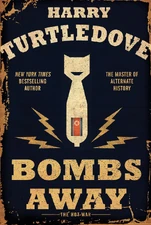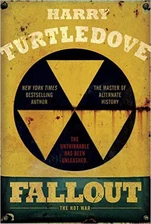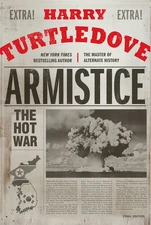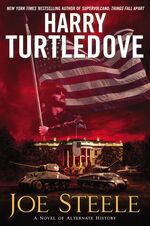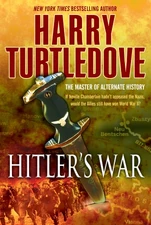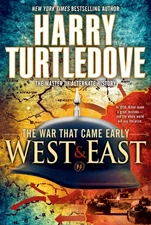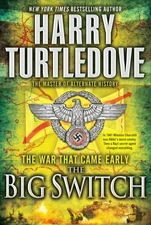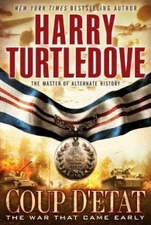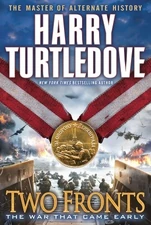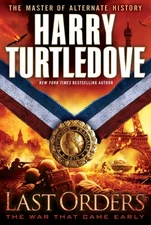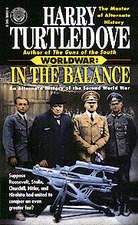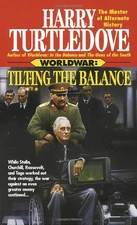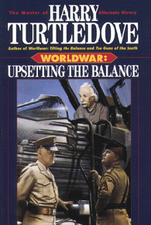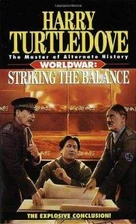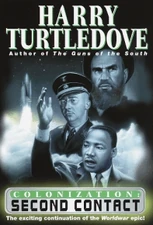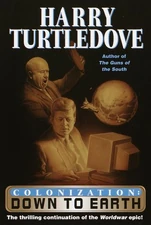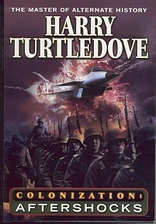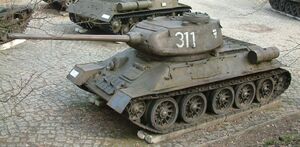
The T-34 was a Soviet medium tank produced from 1940 to 1958. Although its armour and armament were surpassed by later tanks of the era, it has been often credited as the most effective, efficient and influential design of World War II. First produced at the KhPZ factory in Kharkov (Kharkiv, Ukraine), it was the mainstay of Soviet armoured forces throughout World War II, and widely exported afterward. It was the most-produced tank of the war, and the second most-produced tank of all time, after its successor, the T-54/55 series. In 1996, T-34 variants were still in service in at least twenty-seven countries.
At its introduction, the T-34 possessed an unprecedented combination of firepower, mobility, protection, and ruggedness. Its 76.2 mm (3 in) high-velocity tank gun provided a substantial increase in firepower over any of the T-34's contemporaries; its heavy sloped armour was difficult to penetrate by most contemporary anti-tank weapons. When the Germans introduced the Tiger Tank, the existing T-34 gun could only penetrate the side armour and only at very close range. The Soviet command made the decision to retool the factories to produce an improved version of the T-34 (designated the T-34-85). Its turret ring was enlarged from 1,425 mm (56 in) to 1,600 mm (63 in), allowing a larger turret to be fitted with larger 85 mm gun. The resulting tank gun could penetrate the side armour of the Tiger I from a distance of 800 meters and the turret side from a distance of 600 meters.
T-34 in The Hot War
In the late 1940s and early 50s, the Soviet Union was replacing the T-34s it had with the newer T-54 in Europe.[1] However, when the ground war phase of World War III began, T-34/85s supplemented the T-54s and Stalins used in the initial break-through at Fulda.[2]
The Soviets had sufficient stores of old T-34s to provide to their allies in Korean theater both before the wider war and after. Despite the Americans dropping several atomic bombs in Manchuria to disrupt supply lines, more machines were shipped after the rail lines were repaired and used to try to push into South Korea.[3]
By December 1951, the Soviet Union was using their store of T-34s for the war in Europe. Veteran tankers who were familiar with the T-34 knew that it was no match for the tanks NATO were fielding, but it didn't matter to the high command.[4] Indeed, at least one commander, Major Kliment Todorsky, used T-34s to draw enemy fire during a drive on Paderborn and then use his T-54s to counter-attack.[5]
T-34 in Joe Steele
The T-34 helped the Soviet Union win World War II on the Eastern European front. They upgraded the tank with a more powerful gun and supplied these new T-34/85s to their allies such as North Japan.
When the Japanese War broke out a few years later, the new model outmatched the US Army's Shermans with a kill ratio of one T-34/85 for every two to three Shermans. The Soviet tank was faster, had better armor and a more powerful gun. The Americans had better fire control but it didn't matter if the round didn't penetrate. However, the new Pershing outclassed the T-34/85 although not to the same extent and was available in limited numbers.[6]
T-34 in The War That Came Early
During 1941, the Russians started introducing the KV tank, and later, the T-34. The T-34 proved to be the most effective tank the Russians fielded, but they hardly proved effective due to their piecemeal deployment along the front.
T-34 in Worldwar
The T-34 was the Soviet Union's main tank. It was the pride of the USSR's industrial capability, because it was able to be made in large numbers, a advantage not shared by Landcruisers. Although the T-34 din't perform as well against the Landcruiser, many in the Race, including Fleetlord Atvar thought it well designed with its sloped armor and wide treads for getting over the worst ground.
References
- ↑ Bombs Away, pg. 22, HC.
- ↑ Ibid., pg. 115.
- ↑ Ibid., pgs. 276-280.
- ↑ Fallout, loc. 4482-4583.
- ↑ Ibid., loc. 4520-4543.
- ↑ Joe Steele, pg. 356, HC.
| |||||||||||||||||||||
| |||||||||||||||||||
| ||||||||||||||||||||||
| |||||||||||||||||||||||||
